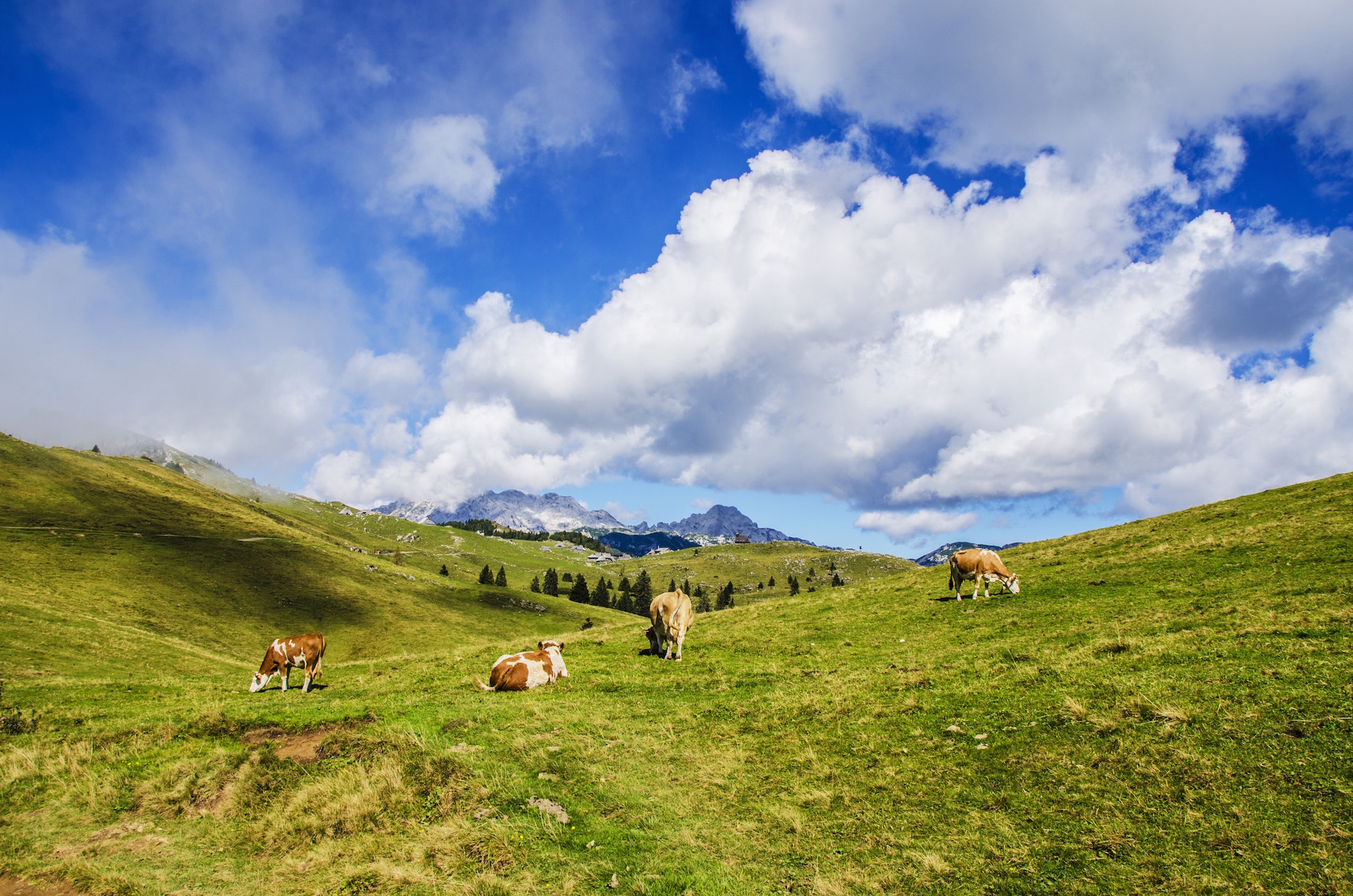You can be an Environmentalist and Eat Meat

This article was originally published in May 2018. Last updated in September 2019.
Can you be an environmentalist and eat meat?
Environmentalists are people who care about the environment and make decisions to reduce their environmental impact. From biking more to cutting plastic waste, environmentalists show there are many ways to reduce our environmental impact. By 2050, the global population will be close to 10 billion people. We need to be more sustainable.
But how many of us look at what’s on our plates? Agriculture, particularly animal agriculture, is one of the largest consumers of natural resources like land and water. On top of that, 14.5% of global greenhouse gas emissions are contributable to animal agriculture.
Our demand for animal products is only going to increase. In 2018, the average American will consume about 222 pounds of red meat and poultry alone. By 2050, the global demand for met and other animal products will almost double. The current animal agriculture system is already pushing the earth to its limits. How can it possibly produce almost twice as much?
So, can you be an environmentalist and eat meat?
With cellular agriculture, you can.
Cellular agriculture (“cell ag”) is the field of growing animal products (like meat, leather, and egg white) from cell cultures instead of raising animals for the same products. This innovative process eliminates the need to use livestock animals to produce the same animal products. Compared to the current livestock agricultural system, cell ag provides an alternative and sustainable way to produce meat and other animal products.
Environmental Benefits
Beyond the high greenhouse gas emissions, animal agriculture is a large consumer of natural resources like land and water. About 1/3 of all grain produced feed animals and not people. That’s a lot of land and food. It also takes approximately 38 pounds of feed to produce 1 pound of beef. That same pound of beef requires about 1,799 gallons of water to produce. These are just the numbers for 1 pound of beef. Globally, producing meat and animal products use about 30% of all fresh water resources and approximately 25% of the earth’s surface. Studies have shown that animal agriculture is also one of the leading sources of deforestation in order to create more farmland to grow food for animal agriculture and not for us. Clearly, as the global demand for meat and animal products increase, the current livestock agricultural system is not sustainable. It is too resource-demanding with a high environmental impact.

Prior to cellular agriculture, there had not been a sustainable alternative to animal agriculture to produce meat and animal products. By using cells directly, cell ag provides an option that is more environmentally friendly and, as a result, more sustainable. Meat produced via cell ag, for example, will use approximately less than one-tenth of the water and land resources. Other animal-derived products (like milk, egg white, and leather) would also have significantly lower environmental footprints if produced via cellular agriculture. Without requiring animals.
Health
Antibiotics are an important part of our everyday lives. From treating illnesses to sanitization, we rely heavily on them. So does factory farming.
Factory farming would not have been possible without antibiotics (how else can you keep so many animals in a closed environment without disease running rampant?). And now, factory farming is threatening to be the end of them. 80% of all antibiotics sold in the US go to animal agriculture. Many of these are the same ones that are given to humans. This has serious health impacts, particularly with the rise of antibiotic resistant bacteria. In Thailand alone, 38,000 people die annually from consuming meat contaminated with antimicrobial-resistant bacteria. This agricultural environment clearly needs to change.

Cultured meatball by Memphis Meats
Considering that cultured meat (or any other cell ag product) would not be fed the large amounts of antibiotics given to animals, cellular agriculture would have significant health implications as well. By cutting out livestock in cell ag, there will be no E. coli or salmonella (or other bacterial contaminations) from livestock that could contaminate the meat or other products if produced in a sterile environment.
Animal Welfare
From pet foods to to various meat products, cellular agriculture can improve the conditions of millions of animals. Without cell ag, there is only one way to meet the future meat demand: increasing the intensity and scale of factory farming and other intensive agriculture environments.
With factory farms under more pressure to produce more, it is likely that animal welfare conditions would worsen from their current state, including increased confinement and imperfect slaughter conditions. By producing meat and dairy without requiring livestock, no animals would have to be used with cellular agriculture. This (obviously) reduces the number of animals uses in the food production process and provides an opportunity to possibly improve livestock welfare.

Conclusion
You can be an environmentalist and eat meat.
Instead of raising a cow from birth to produce milk and meat, cellular agriculture presents an alternative way to get the same animal products without all the problems associated with livestock agriculture. The growing global demand for meat and animal products reflect that most people are not prepared to change their eating habits and lifestyle from meat to plant-based alternatives. The next best option is to find a better, more sustainable way to produce the meat. That is exactly what cellular agriculture offers.
While exciting, there are still many obstacles ahead for cellular agriculture. Beyond any regulatory issues, such as the fight for the word meat, one of the main hurdles ahead for cellular agriculture is scaling production to be commercially viable. Once that is developed, we are likely to see even more cell ag products in the market.
Stay connected with CellAgri
Join our mailing list to receive the latest news and updates weekly from the cellular agriculture industry. Your information will not be shared.





